Clematis "President": description, pruning group and growing
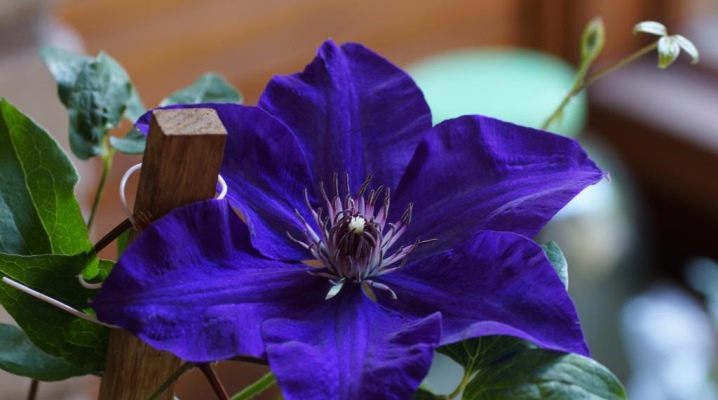
This type of clematis is considered one of the most popular plants among gardeners. Its popularity is based on the fact that the plant looks very beautiful and at the same time is unpretentious in care. It can be safely used to create various arches, decorate gazebos and flower beds.
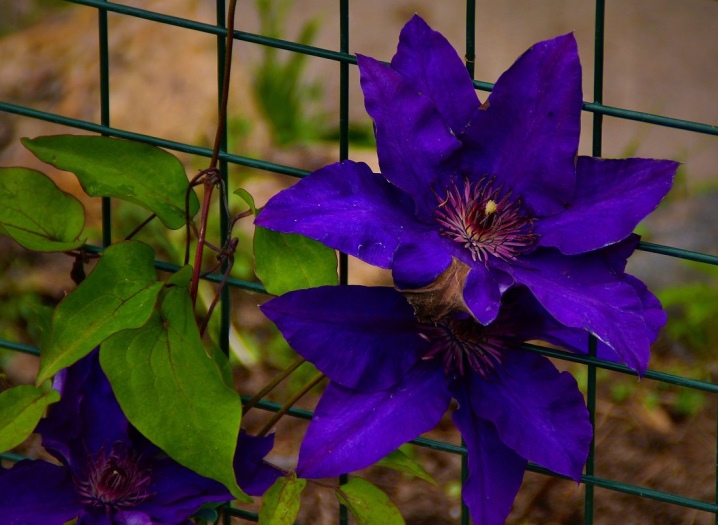
Description of the variety
Clematis "President" became famous in the 19th century. It received such an interesting name in honor of the then president of the Royal British Society of Gardeners. It was bred, like many varieties of this group, from Clematis "Sprawling". Clematis is a shrub whose vines reach up to 2 meters. The width of the plant is from 80 centimeters to 1 meter. During the growing season, a vine can grow up to 5 centimeters in one day.
During the season, up to 5 young shoots can form on it, which gives them the opportunity to braid any supports made for them. People who live in the city very often plant clematis on loggias or balconies, because they themselves are quite compact.
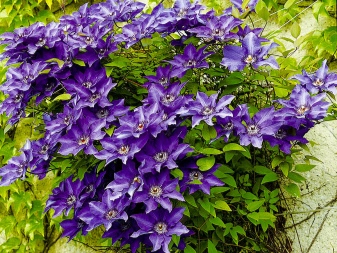

Such a hybrid clematis is large-flowered, because the sizes of flowers reach 16 centimeters in a circle. The edges of its petals are slightly elongated and wavy, moreover, they are sharp at the ends. This makes them look like a star. The flowers have an unusual color: it can vary from the very border of the petals to the middle. Most often, the edges are blue-violet, and in the very center the color is lighter, in some cases even blue.
The middle of each petal is decorated with a silvery stripe, and the anthers are decorated with burgundy tips. Thanks to this, the flower becomes more expressive. At the beginning, it has a more saturated color, and at the end it becomes pale, as if it were burnt out.

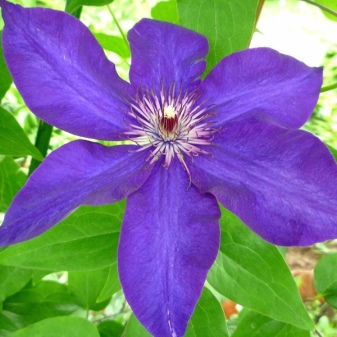
The dark green leaves of this plant are oval in shape, up to 12-14 centimeters in length. As for flowering, it is abundant, and besides, it pleases its owners twice a season. This happens for the first time in early May, flowers appear on shoots that have remained from last year. The second wave begins in early July and continues until the first light frosts.
Landing rules
First you need to choose a seedling. First of all, you need to look at its vines and leaves. They must be in good condition and free from any damage or stains. In the spring, the buds should be seen quite clearly. The seedlings can be sold in small pots or straight from the open field. It is best to wrap the root system of the latter with a slightly damp cloth during transportation.
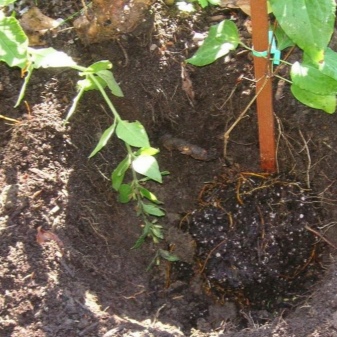

In addition, it is imperative to find a place for the successful planting of clematis. It should be well lightened and protected from drafts or winds. It is imperative to avoid too humid places. It is also worth planting annual plants around clematis: they will help protect the ground near the bush from overheating.
The selected land should be fairly fertile and loose, be able to absorb excess moisture... Sandy or loamy soil is most suitable, but acidic soils are best avoided. If everything is done correctly, then such a plant will delight everyone with its unusual appearance for a long time. The preparation of the pit must be done in advance - 14-16 days before... Its width and depth should be at least 60 centimeters.In addition, the bottom must be covered with a drainage layer made of broken brick, small stones or slate. Then you can lay out a layer of humus. All this is necessary trample down carefully.

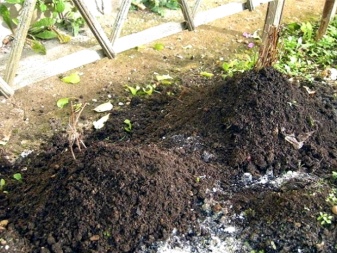
You can add additional fertilizers to the pit, such as some ash, chalk or peat... But in this case, the hole must be dug a little earlier - 25-30 days before the start of disembarkation. In addition, several supports must be installed in it, on which clematis vines can be located in the future. Their length should be up to 2 meters... The distance between young seedlings of a given plant should not exceed one and a half meters. This will allow the bush to develop fully.
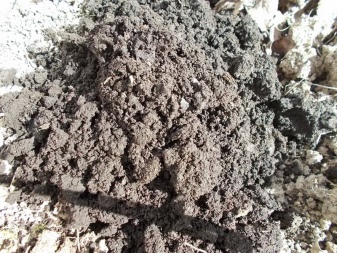
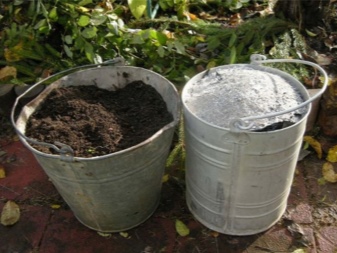
Clematis can be planted in any season: in spring, summer, and autumn. However, the first month of autumn is considered the optimal time. The root system must be dried a little, and then soaked for 2 hours in plain water. It is necessary to plant seedlings in the prepared hole. Their roots must be well leveled, and the lowest bud should be deepened 7 centimeters into the ground. This will contribute to the emergence of a large number of shoots in the future.
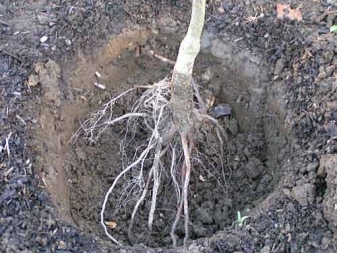
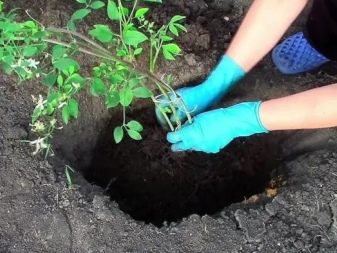
After that, clematis needs to be watered and covered with a layer of mulch. As the bush develops, soil should be added regularly.
Follow-up care
After the young shoots begin to grow, it is necessary to monitor their development. Vines must be tied to prepared supports and guided. This must be done so that they are all covered with flowers.
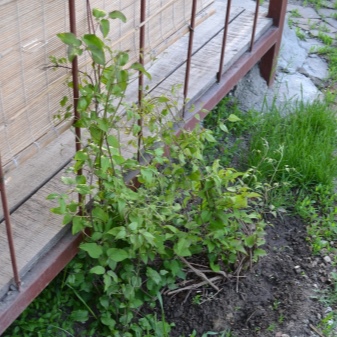
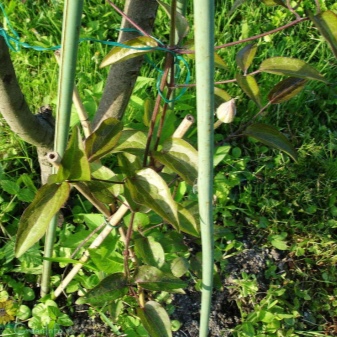
Watering
Water the clematis once a week. On very hot days, this should be done 3 times a week. In the first year after planting, plants need 10 to 20 liters per bush. But for an adult you will need a little more water - up to 35–45 liters. Also, do not forget to loosen the ground around the bush after each watering. Besides, you can lay a layer of mulch so that moisture does not evaporate too quickly. You can use unnecessary weeds or ordinary grass for this.
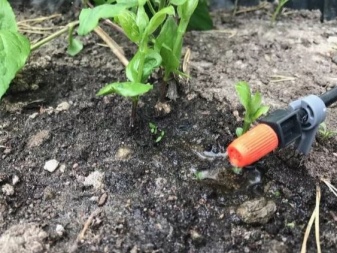
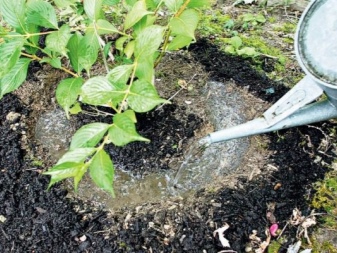
Top dressing
If there is an opportunity to use organic fertilizers as top dressing, then you should not miss it. So, for the winter period, you can fill the ground around the bush with humus. In the summer, a liquid solution from mullein or bird droppings is suitable for this. Those who prefer mineral fertilizers need to know that they need to be applied at least 3 times per season.
- In the first period of clematis development, a urea solution can be used. 10 liters of water will require 35–45 grams of this fertilizer. Under one bush, you will need to add up to 5 liters of the resulting liquid.
- When flowering begins, you can apply a solution based on nitroammophoska. This will require 35–45 grams of this fertilizer and 25 grams of potassium humate. All this must be dissolved in 10 liters of water. One bush will require one bucket of prepared solution.
- After the plant has completely bloomed, it is necessary to water it with a solution made from the following components: one bucket will need 35 grams of superphosphate and 35 grams of potassium sulfate. A bush requires 5 liters of this solution.
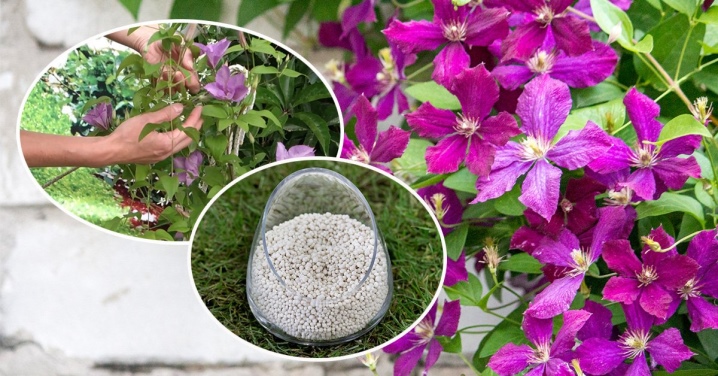
Preparing for winter
Although such a plant is characterized by high resistance to frost, it still needs to be covered for the winter period. Sawdust, peat, and ordinary fallen leaves can be used for this. In addition, all vines must be removed from the supports and carefully rolled up. They also need to be covered a little. Clematis can only be opened with the onset of heat.
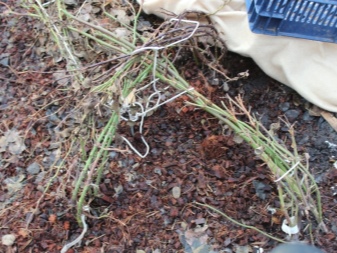
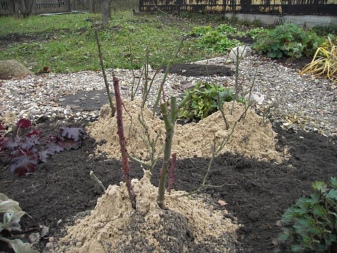
Trimming group
One of the most important steps in the care of clematis "President" is pruning. These plants can be divided into 3 groups at once, for each of which its own type of care is predominant. The clematis in question belongs to the second group. In this case one pruning is carried out immediately after the end of flowering, and the second - in the autumn, right before the onset of the first frost. Bushes that are only recently planted should not bloom.
All buds must be plucked immediately after flowering. This is necessary so that the plant does not waste energy, but uses them for the full development of the root system.
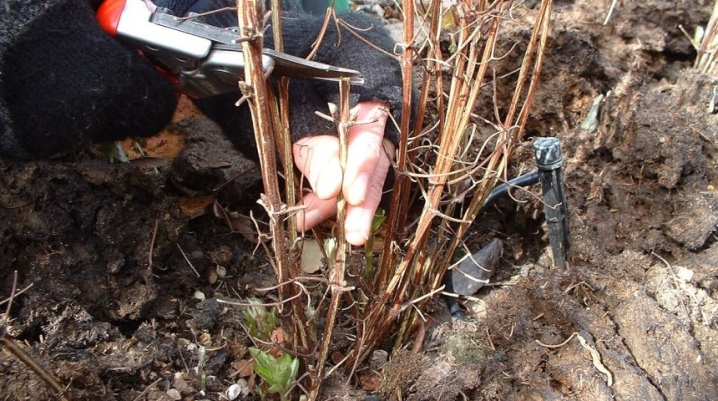
Besides, in the summertime, it is imperative to remove all broken branches, as well as vines that have remained from last year... In the autumn, all branches must be cut almost to the very base. Only small stumps should remain. In addition to pruning, clematis must be tied up so that it can grow in the right direction. This is best done in the spring. Further, the plant will grow and branch on its own. The result should be a flowering “carpet”.
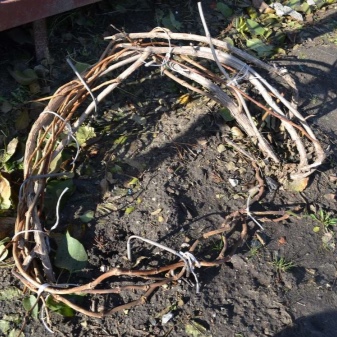
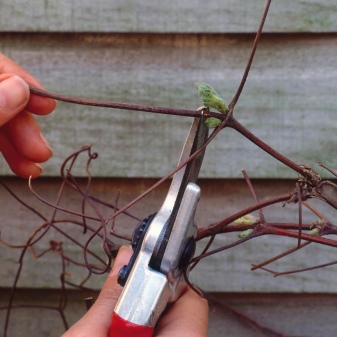
Disease and pest control
Like any plant, clematis can deal with various diseases or be attacked by certain pests. Most of all, they are prone to fungal or bacterial diseases. Among them, it is worth noting wilt and gray rot.
- Wilt... Its main feature is the rapid wilting of the green leaves of the plant. It will be impossible to cure him. Therefore, all infected bushes must be dug up very quickly and burned far outside their area. The place where it grew is best treated with copper sulfate to stop further contamination of the area.
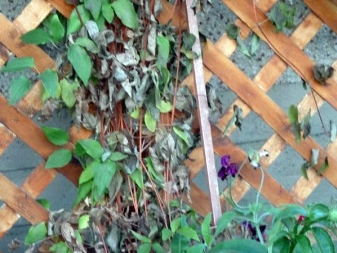
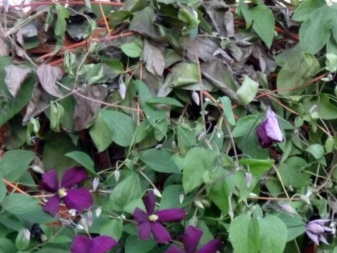
- Gray rot. Most often, such a disease appears during the period of active rains. This is preceded by brown spots on the leaves. In this case, they must be removed, and the bush itself must be treated with fungicides.
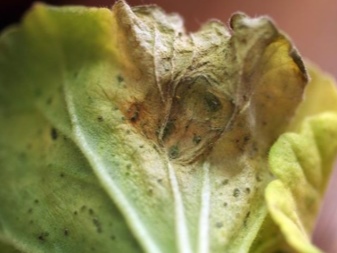

Also, small rodents or slugs can attack clematis. To prevent this from happening, poison can be spread near the bushes. In some cases, it can be a spider mite. To get rid of it, you will need to treat it with the same fungicides.
Reproduction
Many people like this beauty, and most people want to have several such handsome men on their site at once. You can propagate clematis "President" in several ways at once.
- Layers. This option is the simplest. To implement it, you will need to dig a not too deep groove and put your favorite liana in it. After that, everything must be sprinkled with earth, leaving up to 15 centimeters above the ground. In the future, it must be regularly watered until new young shoots appear. After that, they must be dug up and transplanted to a permanent place. This is most often done in spring or autumn.
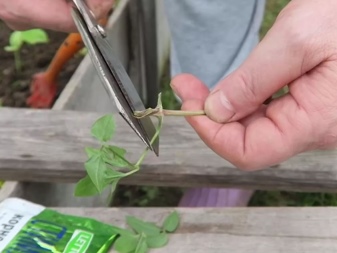
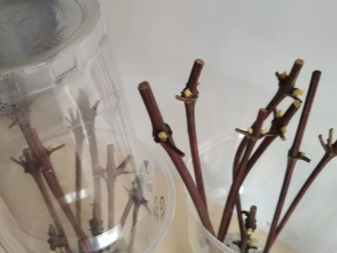
- Dividing the bush... Once the clematis is well established, it can be divided into several pieces and transplanted to another location.
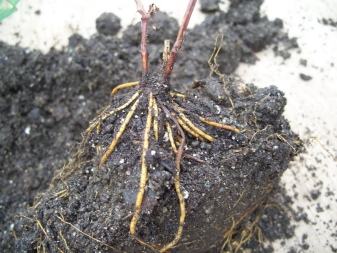
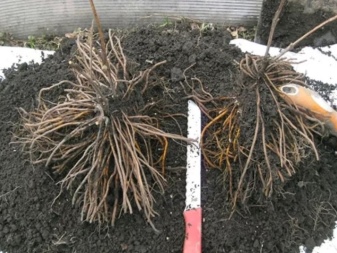
- Cuttings. It is best to cut them before flowering, when the buds appear. To do this, you need to select the branch you like from the very middle. The stalk should have two leaves at the very top. They need to be trimmed a little. After that, it is necessary to plant all the cuttings in the prepared substrate. Then you need to make an impromptu greenhouse. You can use both glass and plastic. Every day, the substrate needs to be moistened, in addition, it is necessary to regularly ventilate the mini-greenhouse.
Two weeks later, when the roots appear, the seedlings can be transplanted into the ground, and after a year, they can be transplanted into a permanent place.
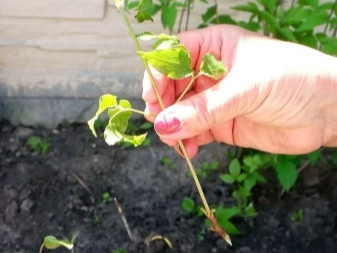
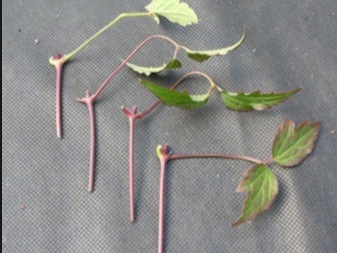
Review overview
According to a large number of gardeners, caring for clematis does not take too much time and effort. In addition, if you follow all the rules for caring for them, the plant in the first year will delight everyone with beautiful and large flowers. The only thing is that at first there will be very few of them. In addition, almost everyone admires the beautiful shade of the flowers, as well as the general landscape picture created by this beautiful plant.
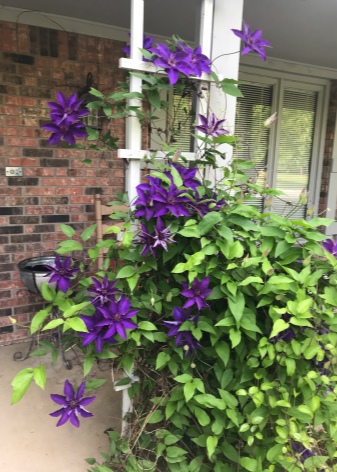
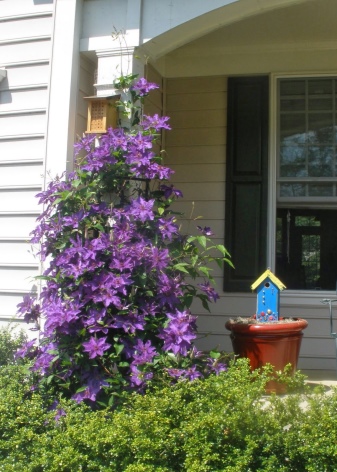
Examples in landscape design
You can use clematis to decorate your site in different ways.
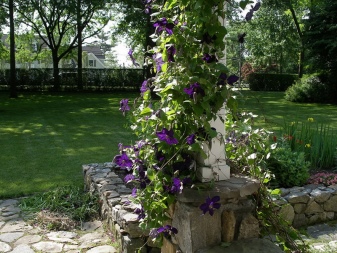
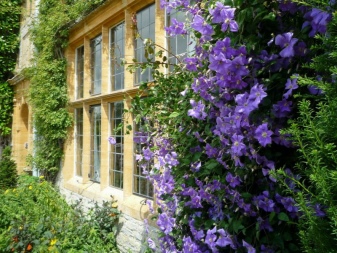
As an arch
You can make an arch right at the entrance to your personal plot. In this case, everyone will be able to admire such beauty.
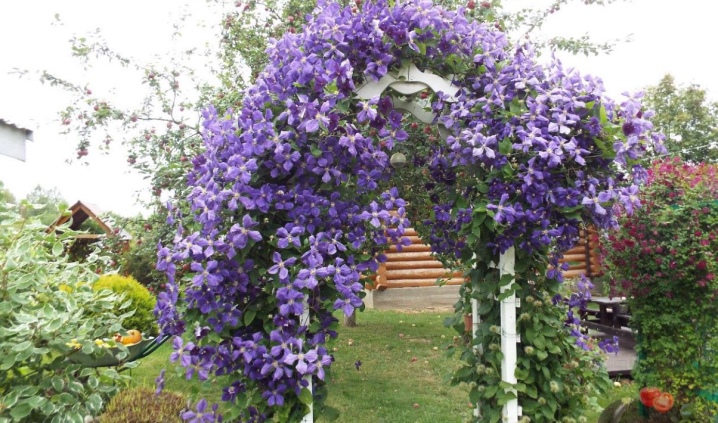
Together with roses
The site will look beautiful if clematis is planted with a rose together. This approach to design is considered traditional by the British. Climbing roses are most often used, which, in addition to their direct purpose, also act as a support for vines.

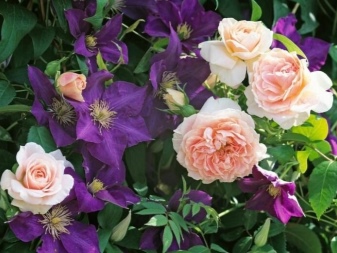
To summarize, we can say that Clematis “President” is perfect for growing on personal plots, as well as for decorating city parks and gardens, because it can be combined with different plants. Its unusually beautiful large flowers will not leave anyone indifferent.
For information on how to properly care for clematis "President", see the next video.







































































































The comment was sent successfully.